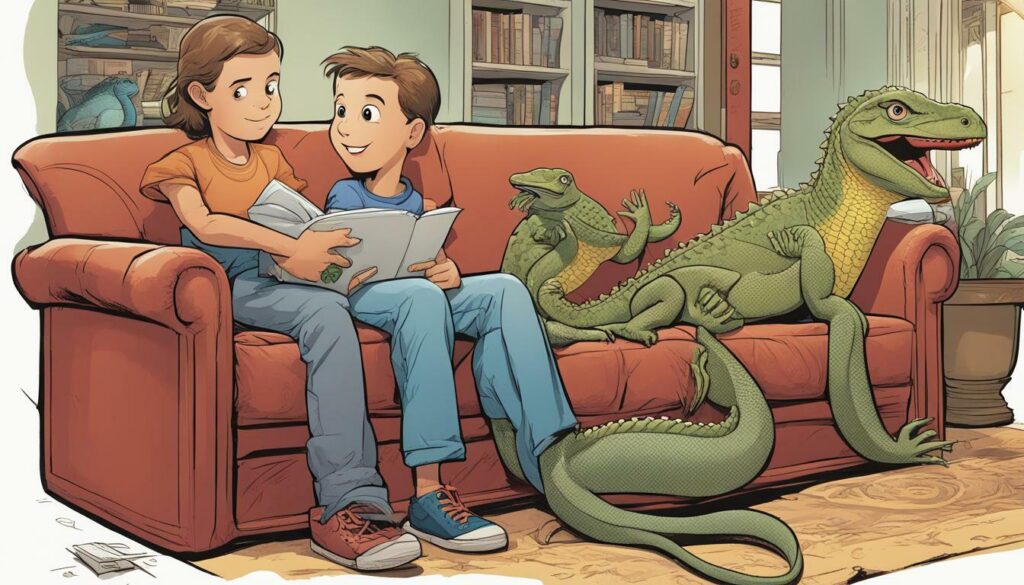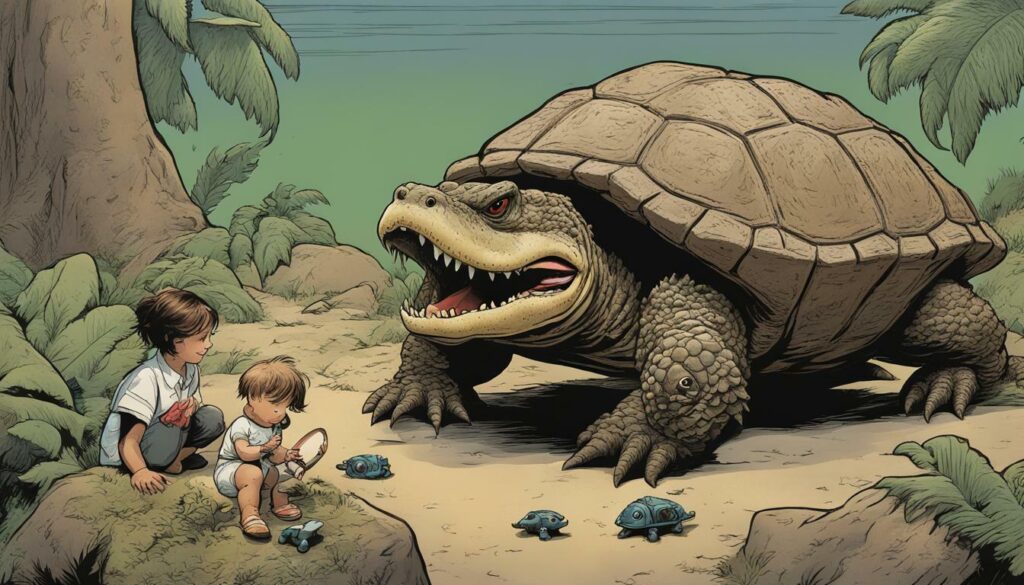
As a parent, you want to provide your children with the best experiences possible, and getting a pet can be a great way to introduce them to responsibility and companionship. However, not all pets are suitable for kids. Some animals may pose a danger to children, while others may require more care than young ones can provide. It’s essential to choose the right pet for your family.
When considering pets for kids, there are certain factors to keep in mind. First and foremost, safety is key. You want to avoid pets that may bite, scratch, or otherwise harm your children. Additionally, you want to choose an animal that is appropriate for your child’s age, maturity level, and attention span.
In this section, I’ll talk about the worst pets for kids and why they may not be the best fit for your family. By understanding the potential dangers of certain pets, you can make an informed decision about which pets to consider for your children.
Key Takeaways:
- Choosing the right pet for your family is essential for your children’s safety and well-being.
- Not all pets are suitable for kids and may pose a danger to them.
- Factors such as temperament, size, care requirements, and legal restrictions should be considered when choosing a pet for your children.
Pets Not Suitable for Kids
When it comes to getting a pet for your child, some animals are simply not suitable. Whether it’s due to their high level of care, specific dietary needs, or aggressive tendencies, these pets can pose a danger to children and are best avoided.
Pets not suitable for kids are those that require an exceptional level of care, as children may not be able to provide what they need. For example, exotic pets like monkeys and tigers may seem appealing, but they require specialized diets and living conditions that are difficult to maintain. These animals can also be unpredictable and attack when they feel threatened.
Unsuitable pets for children are those that may have aggressive tendencies or temperament issues. Breeds like pit bulls and Rottweilers have a reputation for being aggressive and may not be the best fit for a family with young children. These pets can be dangerous if they become agitated or feel threatened in any way.
Prohibited pets for kids are those that are illegal to own as pets. These pets may include exotic and wild animals like lions, tigers, and bears. Owning these pets is against the law and can result in serious legal consequences.
It’s important for parents to carefully consider these factors when choosing a pet for their children. While certain animals may seem appealing, it’s crucial to prioritize the safety and well-being of your child above all else.
Pets Not Suitable for Kids Examples
| Pet Type | Reasons |
|---|---|
| Monkeys | Require specialized diet and living conditions, may become aggressive |
| Pit Bulls and Rottweilers | Aggressive tendencies and may pose a danger to children |
| Lions, Tigers, and Bears | Illegal to own as pets and can result in serious legal consequences |
By avoiding pets that are not suitable for kids, you can ensure that your child’s pet ownership experience is a positive and safe one.
High-Risk Pets for Children
When it comes to choosing a pet for your child, there are certain animals that may pose a higher risk than others. While some pets may be suitable for older children who are mature enough to handle them, others may not be recommended at all.
The least recommended pets for kids:
| Animal | Reasons Why |
|---|---|
| Snakes | Most species require specialized care and handling which can be dangerous, even for adults. They may also carry diseases that can be harmful to children. |
| Spiders | While some species are less venomous than others, they can still pose a risk to children who may not be able to identify them. Even non-venomous spiders may bite if they feel threatened. |
| Reptiles | Lizards, turtles, and other reptiles may carry bacteria such as salmonella which can cause serious illness in children. They also require specialized care and may be aggressive if not handled properly. |
High-risk pets for children:
Even pets that are generally considered safe for children may pose a risk if they are not properly trained or cared for. Some high-risk pets for children include:
- Dogs with a history of aggression or lack of socialization
- Cats with sharp claws and teeth that may scratch or bite if they feel threatened
- Birds that may bite or become aggressive if not handled properly
It’s important to note that while these pets may be high-risk, they can still make great companions for kids if proper training and care is provided.
When deciding on a pet for your children, it’s important to consider the risks and choose an animal that is suitable for their age, maturity level, and ability to handle. By doing so, you can help ensure a safe and happy experience for both your child and their new furry friend.
Understanding the Dangers
When it comes to pets for children, it’s important to understand the potential dangers associated with certain animals. Some pets may pose a risk to children due to their size, temperament, or behavior.
For example, reptiles and amphibians such as snakes, lizards, and frogs may carry salmonella, which can cause serious illness in young children. In addition, some of these pets require specialized handling and may be dangerous if not properly cared for.
Dogs can also pose a risk to children if they are not trained or socialized properly. Aggressive breeds, in particular, may be more likely to display dangerous behavior, such as biting or attacking. It’s important to note that any dog can be dangerous if it feels threatened or provoked.
Small animals such as hamsters and guinea pigs may seem like good choices for children, but they can also pose a risk if they are mishandled or not properly cared for. These pets have delicate bones and can easily be injured if dropped or squeezed too tightly.
It’s important to educate children about the dangers associated with certain pets and teach them how to interact with animals in a safe and responsible way. Make sure your children understand the importance of approaching pets slowly and gently, and always asking for permission before petting or picking up an animal.
Remember, when it comes to pets for kids, safety should always be the top priority.
Conclusion
In conclusion, choosing the right pet for your child is crucial for their safety and well-being. As discussed in this article, certain pets can be dangerous and inappropriate for kids, including those with aggressive tendencies, specific dietary needs, or legal restrictions. It’s important to consider factors such as temperament, size, and care requirements when deciding on a pet for your child.
Remember, just because an animal may be cute or trendy, it doesn’t necessarily make it a good fit for your family. Always do your research and consult with experts before bringing a pet home. By making an informed decision, you can provide your child with a loving and safe pet that they can enjoy for years to come.
Thank you for reading this article on worst pets for kids, dangerous pets for children, inappropriate pets for kids, pets not suitable for kids, unsuitable pets for children, prohibited pets for kids, least recommended pets for kids, and high-risk pets for children. We hope it has been helpful in your decision-making process.
FAQ
Q: What are the worst pets for kids?
A: The worst pets for kids are those that may pose a danger to their safety or require a level of care that is too high for children to handle. Animals with aggressive tendencies, specific dietary needs, or large size are generally not suitable for kids.
Q: Are there any pets that are prohibited for kids?
A: Yes, there are certain pets that may be prohibited for kids due to legal restrictions. Animals that are considered exotic or dangerous may not be allowed as pets in some areas. It’s important to check local laws and regulations before considering these pets for children.
Q: What are high-risk pets for children?
A: High-risk pets for children are animals that may pose a danger to kids due to various factors such as size, temperament, or specialized handling requirements. Examples of high-risk pets include venomous reptiles, large dogs with aggressive tendencies, or animals that require extensive care and supervision.
Q: What dangers do certain pets pose to children?
A: Certain pets may pose dangers to children due to their venom, sharp teeth, or unpredictable behavior. Pets like snakes, spiders, or certain breeds of dogs may bite or attack if not properly handled or trained. It’s important to understand these risks and take necessary precautions to keep children safe.








